Nutrition and food
Thought for food: Nutrition research at Imperial
by Ian Mundell
Food is an aspect of life that constantly challenges the ingenuity of scientists. Its most pressing questions may start out as problems of biology, but only find solutions once chemistry, engineering, psychology and economics have been brought to bear.
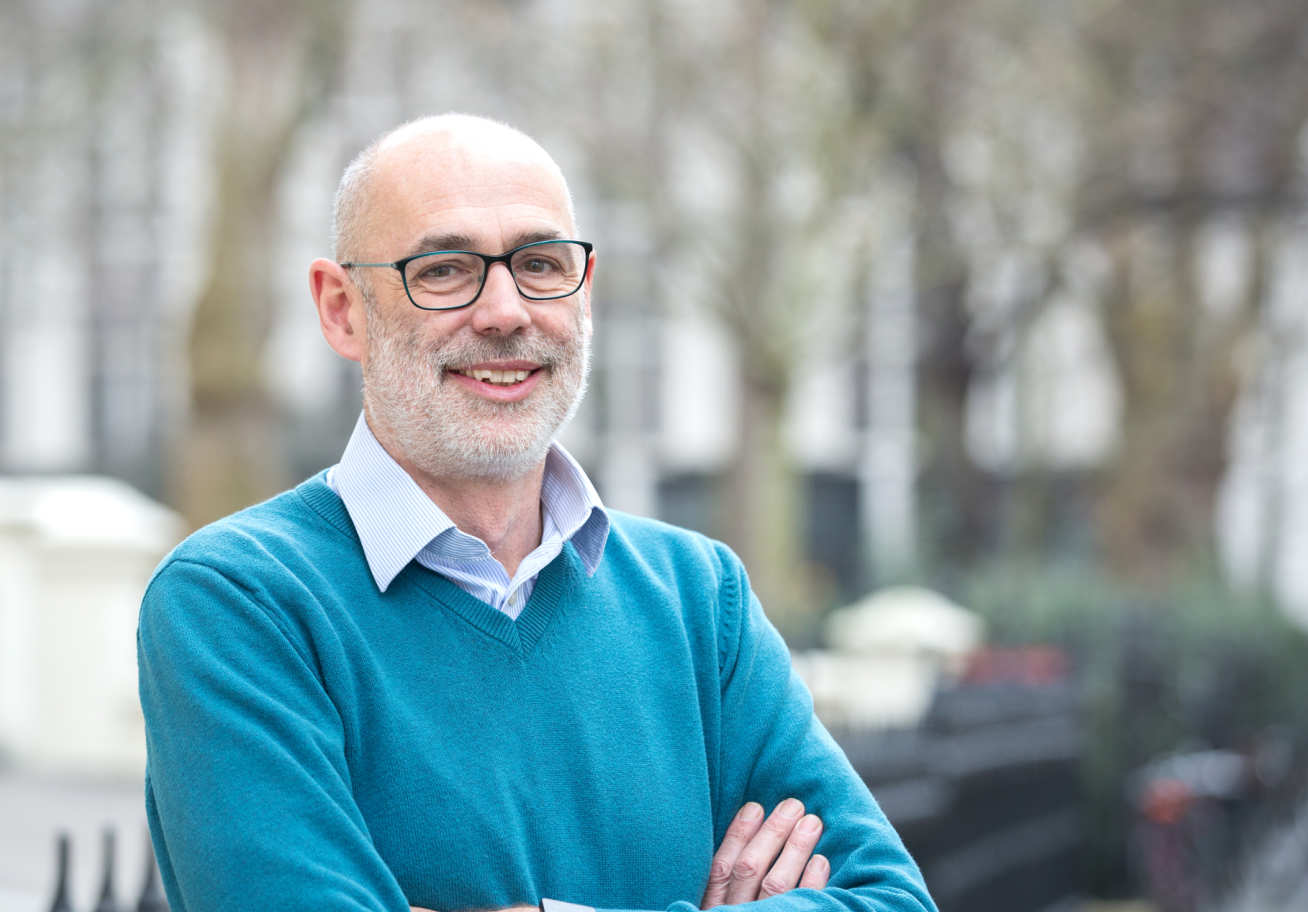
"Most of nutrition isn't about a single discipline, it's about bringing multiple disciplines together to work on a problem," says Gary Frost, Professor of Nutrition and Dietetics in the Department of Medicine at Imperial. Hence the College's Nutrition and Food Network, which Professor Frost leads.
"The goal of the Network is to bring the strengths of Imperial researchers together to focus on diverse areas within nutrition research," he explains. It encourages cross-disciplinary work, showcases the high quality of ongoing research, and acts as a point of contact for business, policy makers and the media.
"The Network works by posing exciting problems," Professor Frost goes on. "You can't force people to work together, but if there is excitement about what you are trying to achieve, then it works."
As well as collaborating with policymakers, the Network has strong links with the food industry. "If you want your research to count, then you've got to be able to work with people who are making a difference. The food industry and retailers play a major role in that, and having them as partners in this journey we are on is really important."
Companies engaging in projects by researchers who are part of the Network include Nestlé, PepsiCo, Quorn and Heptares, while public funding has come from the UK research councils and the National Institute for Health Research.
Eating in private
Some of the questions that demand this multi-disciplinary approach are apparently simple, such as what people eat at home. "This is very difficult, if not impossible, to understand," says Professor Frost. "Most of the big datasets in the UK have error rates of around 50%."
The problem is that people like to present a favourable picture of their eating habits, either deliberately or subconsciously. "So you've got to have an assessment technique that takes the person out of the equation."
The approach being developed at Imperial combines engineering, nutrition and medicine. Dr Benny Lo from Professor Guang-Zhong Yang’s team at the Hamlyn Centre has designed a tiny, wearable camera that turns on only when a person's jaws move in the specific way associated with eating. Surface recognition software can identify the food being consumed. Meanwhile Professor Elaine Holmes and Dr Isabel Garcia-Perez, in the Department of Surgery and Cancer, have developed methods to understand the quality food consumed by analysing molecules in urine.
"These technologies could work side by side," says Professor Frost. "If we can bring them together, we might start to understand for the first time what people are truly consuming." This will help policy makers who might, for instance, want to reduce diabetes by changing eating habits. "We hope that these technologies will give the accuracy needed to understand the impact of policy."
Professor Frost's and Professor Yang’s groups, together with partners in the USA, have also been awarded a grant from the Bill & Melinda Gates Foundation to see if this approach can be used to assess food intake in developing countries. "Understanding food intake in developing countries can be very challenging, we believe this technology will bring new understanding about how food is consumed in those communities," says Professor Frost.
More efficient crops
The cross-disciplinary approach is apparent across the Network, and along the whole span of the food chain. At the beginning of the chain there is Dr Laura Barter, a Senior Lecturer in the Chemistry Department and Director of the Agri-science Chemical Biology research network AGRI-Net, who is working on ways to make food crops more productive through improving photosynthesis.
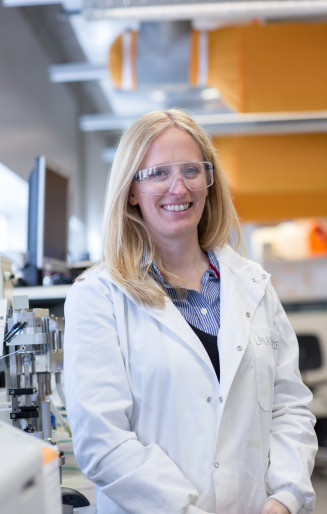
"Despite being one of the most important processes on the Earth, photosynthesis is surprisingly inefficient," she says. "Typically this conversion of light energy into stored biomass within the plant is only of the order of 1–2% efficient."
One of the limiting factors in the process that Dr Barter has chosen to address is rubisco, an enzyme that captures carbon dioxide (CO2) from the atmosphere. "Rubisco is a lousy enzyme," she explains. "Firstly it is slow. Typical enzymes can catalyse thousands of molecules per second, but rubisco can only catalyse around three molecules per second. It also suffers from a lack of specificity. It can catalyse the reaction that we want with CO2, but it can also catalyse a competing reaction with oxygen, which causes a loss to the plant."
Increasing the concentration of CO2 near rubisco would be one way of minimising the effects of this competing reaction and increasing its efficiency. Some plants, such as maize, have evolved mechanisms to do just this, but the most common grain crops, such as rice and wheat, have not.
Taking nature's lead, Dr Barter and her colleagues are developing CO2-concentrating chemicals that could be applied to crops like a fertiliser. "We have already synthesised a suite of molecules that are able to capture and release CO2, and we are testing their effect on rubisco and are seeing really promising results."
The challenge now is to get these molecules to the enzyme in its natural setting. This involves working with membrane biophysics researchers to investigate the cell boundaries that stand in the way, and then with synthetic chemists to shape the molecules to help their delivery.
"This is a novel approach, and with the drive to find innovative methods for increasing crop yields it is hoped that this project will generate interest from companies," Dr Barter says.
Making healthy choices
Our relationship with food as nutrition begins with decisions about what to eat and how to eat it. This behaviour is a fertile area for study and a point at which policymakers and companies can intervene.
Marisa Miraldo, Associate Professor in Health Economics at the Imperial College Business School, works on interventions to encourage healthy behaviour, including healthy eating. She is particularly interested in looking for the behavioural determinants of food choices and, in particular, how 'economic' preferences (eg risk and time preferences, and self-control) shape nutritional balance and how people react to interventions to curb obesity.
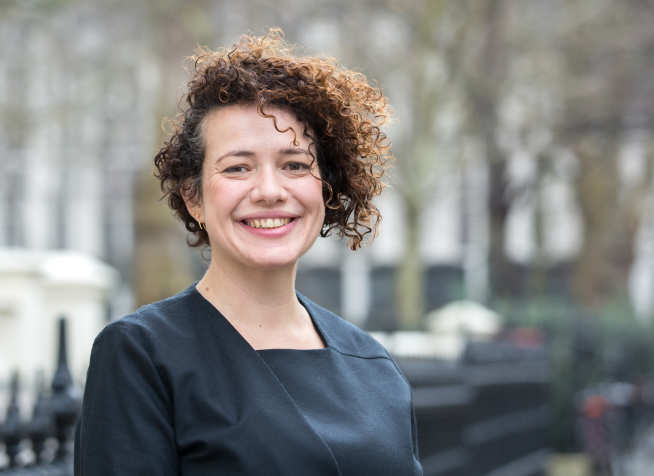
"What we need to do is identify these behavioural types and then design personalised prevention interventions to encourage better food choices," she says.
Some patterns are beginning to emerge from her work. "People who are risk-averse tend to make better food choices, although this relation tends to be stronger among men" she says, adding that she is investigating why this gender difference exists. "And regardless of gender, people with high levels of self-control have better nutritional balance, as you would expect."
The next step is to see if interventions can be devised that target these different groups. For example, would an intervention that rewards risk lovers for weight loss, by appealing to their love of risk, lead to sustained weight loss over time? Or are there ways of getting people with good intentions but poor self-control to commit to following weekly menus in company canteens?
"At the moment these are just correlations, so we need to test these ideas out, measure their impact and whether or not they are cost effective to implement," Dr Miraldo says. But it is clear that the behaviour differences she sees in the population should be addressed with personalised interventions rather than the typical one-size-fits-all type of intervention. "We speak about precision medicine and personalised care, but I think we need to speak a bit more about personalised prevention."
Food habits and rituals
While Dr Miraldo approaches eating behaviour from an economic point of view, Dr Weston Baxter has design in mind. A Lecturer in the Dyson School of Design Engineering, he works on ways that design can modify the way people behave around food.
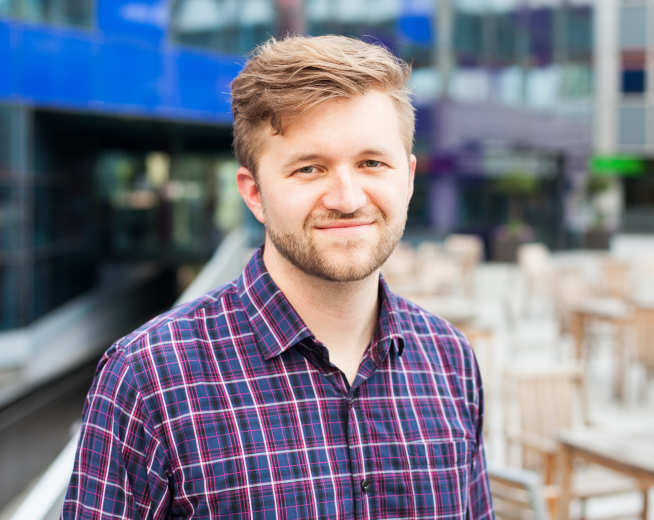
"The starting point is to go where the behaviour is occurring, to observe what's happening, and to try to understand deeply why people are doing what they are doing," he explains. The insights gained in this way can then inform design decisions. For example, studying how people prepare food in the developing world or use hand washing stations near community toilets has provided design insights that help maintain good hygiene practices such as handwashing.
In the commercial context this work has to be less controlling, and one of the most intriguing projects Dr Baxter is working on involves food rituals, such as the way some people always separate the sticks of a chocolate bar in a particular way before eating them. This is interesting because rituals appear to make food more enjoyable.
A simple ritual such as cutting a hamburger patty into quarters before taking a bite can increase the enjoyment people report by 25% compared to simply biting into it. "That is extremely interesting," he says. "I can redesign food or drink all day, but I probably won't get 25% better satisfaction from simple changes to the food itself. But if I can change how somebody eats, I could get a huge swing.”
He is now in the early stages of a project with Nestlé to explore this further. "It's about how we can fundamentally design rituals into the consumption experience. It's not telling somebody how to eat something, but encouraging rituals in a different way."
This is also not about academics taking over product development. "From a design perspective, the really interesting question for us is: how do we make this a systematic approach that we can make accessible to people who don't have PhDs in psychology, and that's practical for companies, nongovernmental organisations or other people to use?"
Mouth mechanics
Once the food is in someone's mouth, another kind of engineer starts to get involved. Dr Maria Charalambides, Reader in Mechanics of Materials in the Department of Mechanical Engineering, applies knowledge that she developed studying food processing to food consumption. "Oral processing is just another example of a process," she says. "It's a lot more complicated than industrial processing: the human body is involved, it is a biological system and very complex."

She began, logically enough, with the first bite, although rather than humans the focus here was how dogs ate pet food. Computer models were validated with a test rig built around a 3D scan of a boxer dog's jaw. "We looked at the food breakdown, the forces on the teeth and so on."
Now the aim is to cover the whole process of chewing, which will involve bringing in other engineering specialists. "I'm collaborating with fluid dynamicists and tribologists to take the food from the first bite to the bolus that you can swallow. So, how does the food interact with the mouth cavity? How does some of it change phase from solid to liquid? How does it interact with the surfaces in the mouth?"
This information is of great interest to the food industry. "The oral process very much affects what the consumer thinks about a product, and whether they will buy it or not," Dr Charalambides explains.
As companies search for new sources of protein or for ways to reformulate food so it becomes healthier, they have to make sure that customers get the experience they are used to. Sugar is not only sweet but it helps determine the structure of food.
"If you are going to remove it, how are the mechanical properties of the food going to change? And how can you change the food so that you compensate for the lack of structure from the ingredient?" she asks. "This is definitely something that engineers can help with."
Taste perceptions
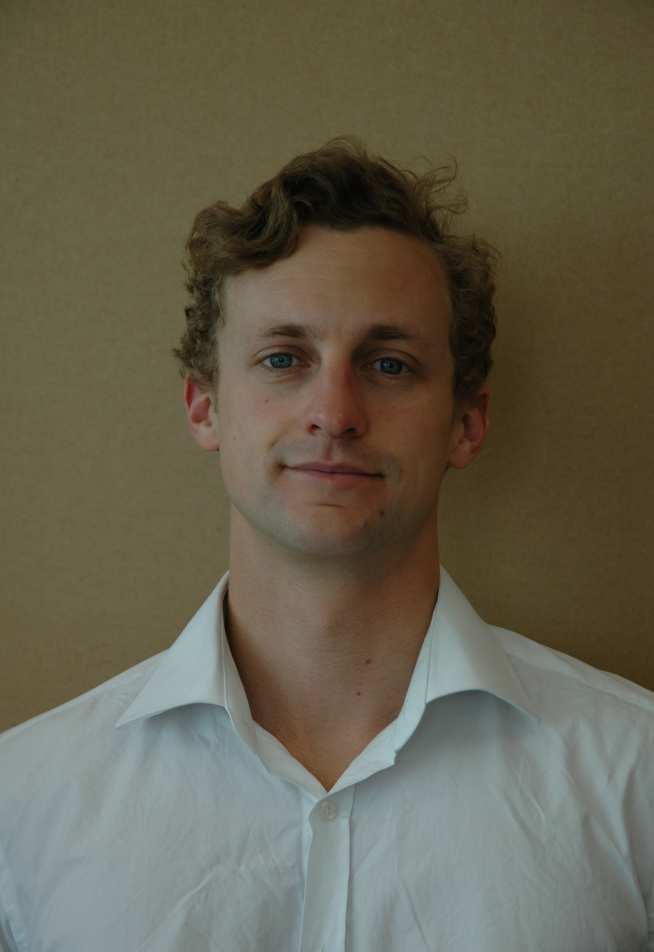
One of these engineers is Dr Connor Myant, a Lecturer at the Dyson School of Design Engineering. His background is in tribology, the study of friction, wear and lubrication, which applies just as well to the mouth as it does to machines. "As you are swallowing or masticating, you are rubbing oral surfaces together, be that your tongue, your palate, your cheek, or your teeth, and then there is a lubricant in between, either the beverage or the food."
One aspect of his work, together with Dr Tom Reddyhoff in the Mechanical Engineering Department's Tribology Group, is lining up studies that quantify the behaviour of food in the mouth with the human panel studies that the food industry traditionally uses to asses customer satisfaction. For example, if negative feedback from the human panels correlates with products that have certain friction characteristics, recipes can be sought with ingredients to counteract this.
"We can build up a far more scientific appreciation for why some ingredients get a particular sensory response, as opposed to others," Dr Myant explains. "We can speed up the development of products in the laboratory, minimise the amount of expensive human panel testing that needs to be conducted, then go back to the panels at a later date for validation of the final recipe."
This work takes place in close collaboration with companies, but without getting into product development. "We develop the methods that enable companies to increase their understanding of their products."
Into the gut
Dr Charalambides is also interested in what happens to food after it is swallowed. "We are trying to develop models for digestion, so we can understand how the food breaks down in the gastro-intestinal tract," she says. Again, this is not so far from a traditional engineering problem. "You can think of the food going from the stomach into the intestine as an extrusion process, which is something that we have worked on in industrial machinery."
As with studies on the mouth, the idea is to validate computer models with experimental devices that mimic the mechanical action of the gut. And since the breakdown of foods in the stomach and intestine affects nutrient availability, the results will have implications for health and nutrition.
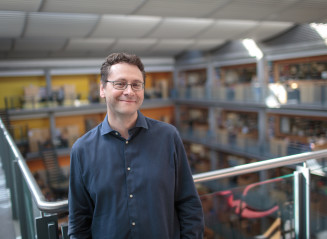
Digestion is also a chemical process, which is where Ed Tate, Professor of Chemical Biology in the Department of Chemistry, comes in. He is interested in how biological systems 'talk' to each other using chemicals, in this case how the small molecules produced when gut bacteria process food act as a signal to the body.
"This is an indirect way of your body sensing the need to start increasing the amount of insulin, for example, because it is going to start receiving more nutrition, and to control appetite," he says.
In particular he is working on short-chain fatty acids produced in digestion, which interact with two receptors in the gut to stimulate the release of hormones. "We think that these receptors are very important. Possibly we can target them with drugs, but also maybe we can change the structure of food to affect the signalling pathways without needing to make a drug."
This research is being carried out in "mini-guts" developed by Professor Frost, which are replicas of the colon or parts of the intestine grown in the laboratory from human cells. "These recapitulate the microscopic shape of the gut to some extent, and a lot of the signalling that goes on in there as well," says Professor Tate.
It is hoped that these experimental systems can be developed further, for instance by using microfluidic techniques to reproduce the fluid environment of the gut. "In a real environment nutrients are flowing across the surface of the gut, mucus is produced and so on, so getting these things into the system is the next challenge," he says.
"All of these approaches are very multi-disciplinary. You need engineers for the chips, Gary [Frost] for the biology, me for the chemistry, and Dr Aylin Hanyaloglu who works on signalling pathways. It's a really nice example of a project that couldn't work without all the pieces together."
Active ingredients
The idea of using these short-chain fatty acids to affect the behaviour of the gut has been taken forward by Professor Frost, in collaboration with colleagues at the University of Glasgow. The main challenge has been one of delivery. "The action takes place deep down in your colon, which is highly inaccessible," he says. "Getting anything to travel there is very difficult, because the body is very good at breaking stuff down."
The solution has been to fix the short-chain fatty acid, in this case propionate, onto a common dietary fibre called inulin to produce a food supplement. "That delivers a certain quantity of short-chain fatty acid into the colon, and you can get predictable effects on appetite regulation."
Professor Frost's group has just been awarded a large grant from the National Institute for Health Research for a randomised control trial to see if this supplement prevents weight gain in people between the ages of 20 and 35.
While aimed at commercial application, so far all of this work has been done without a business partner. "We've taken this up to the stage of putting in a novel foods application, and we hope that when that is approved, industry partners will start to come on board."
Ian Mundell is a journalist who specialises in research and higher education. He divides his time between London and Brussels.
This feature was commissioned to coincide with the Imperial IdeasLab at the World Economic Forum Annual Meeting in January 2018, with support from the Imperial Business Partners programme, which offers members accelerated access to the best of the College’s expertise, technologies and facilities. (Version 2, March 2018)


